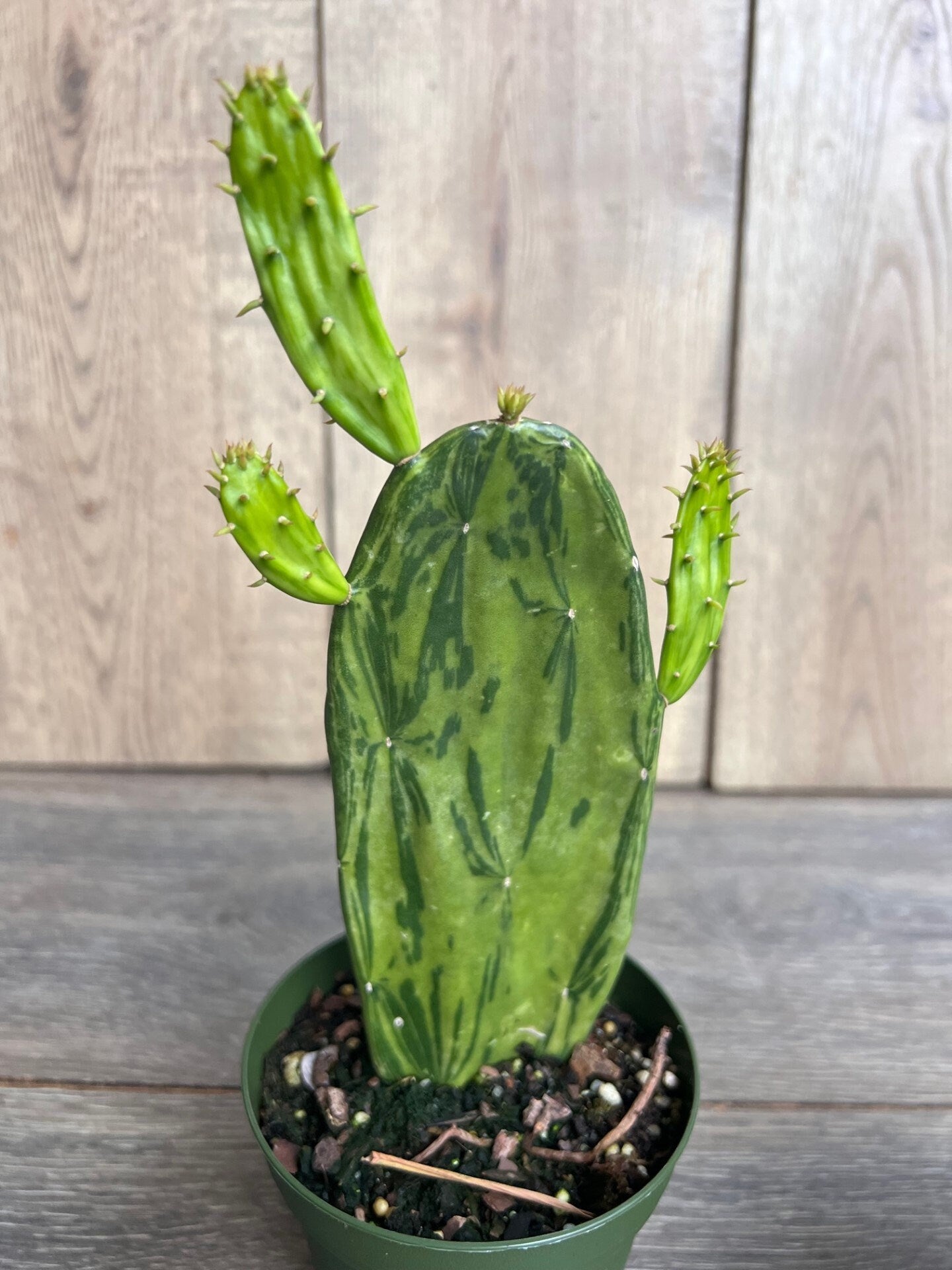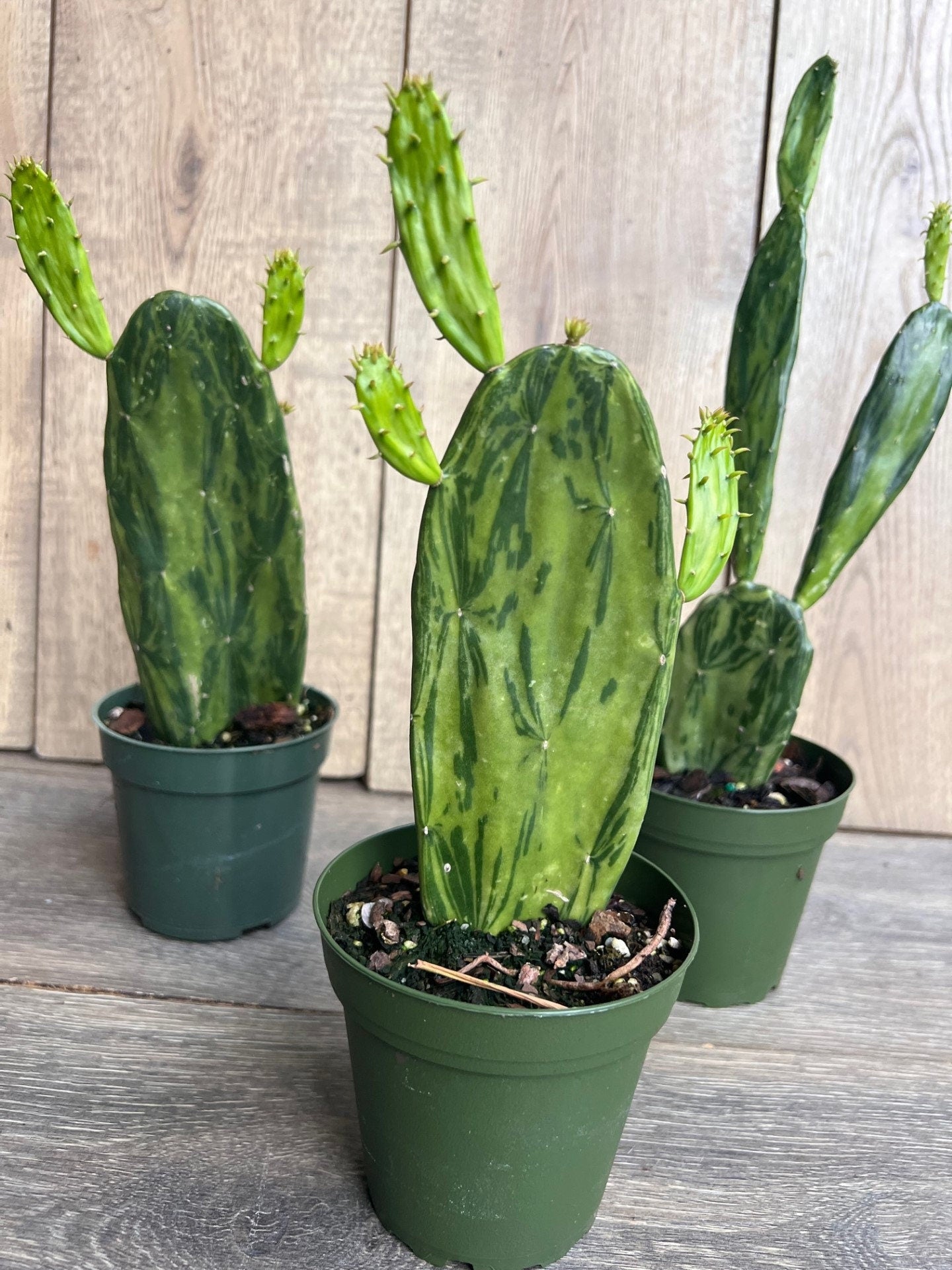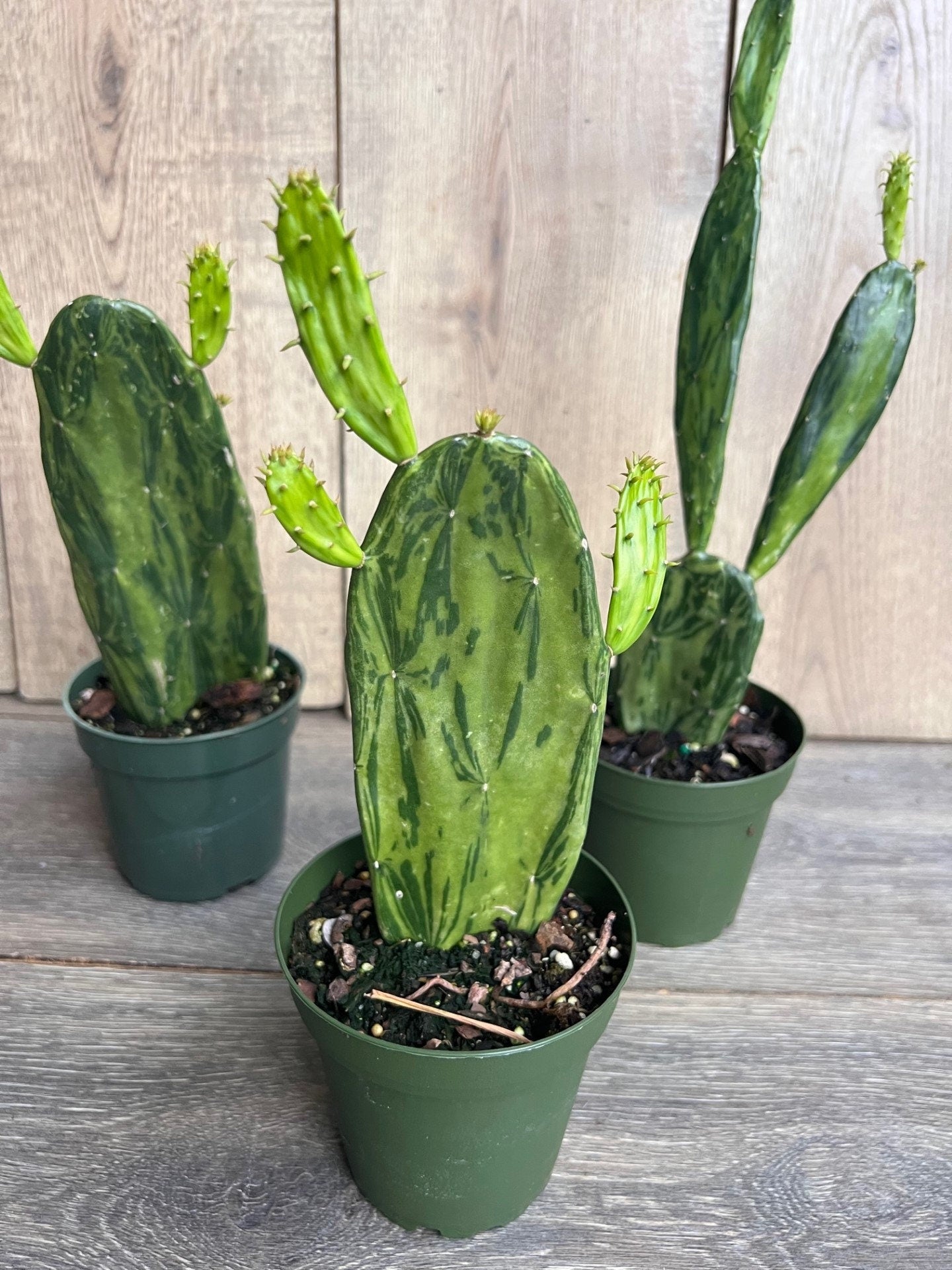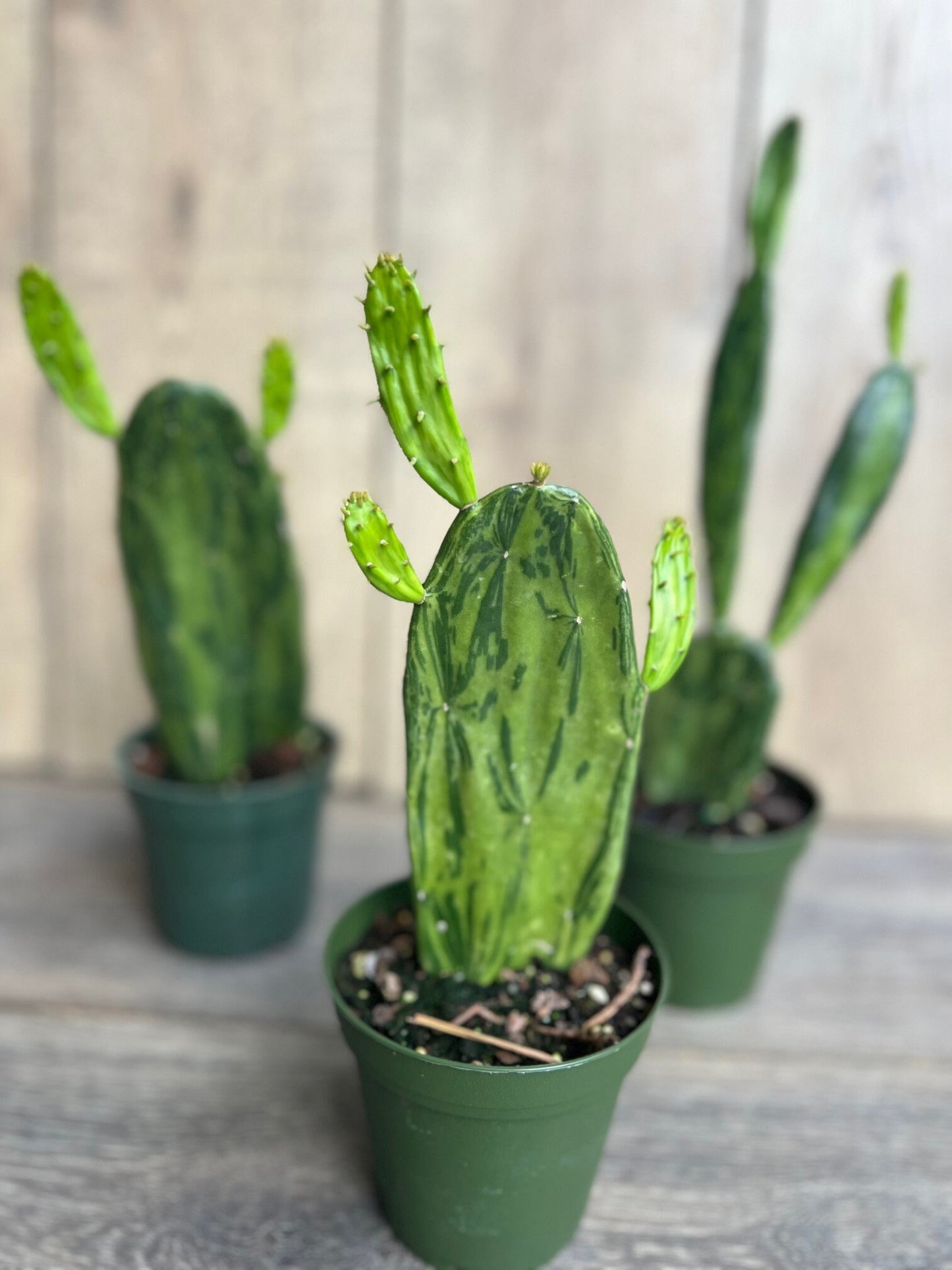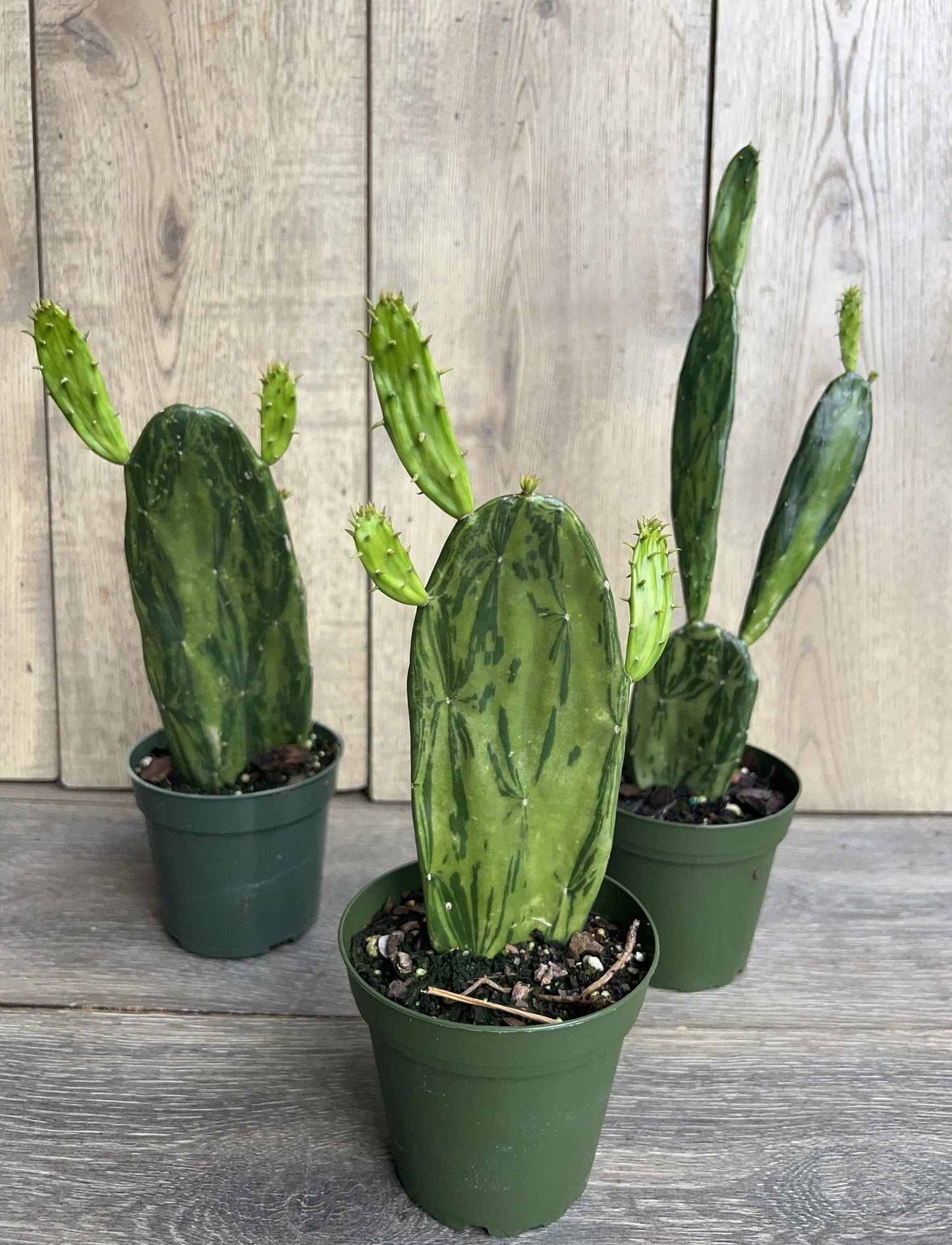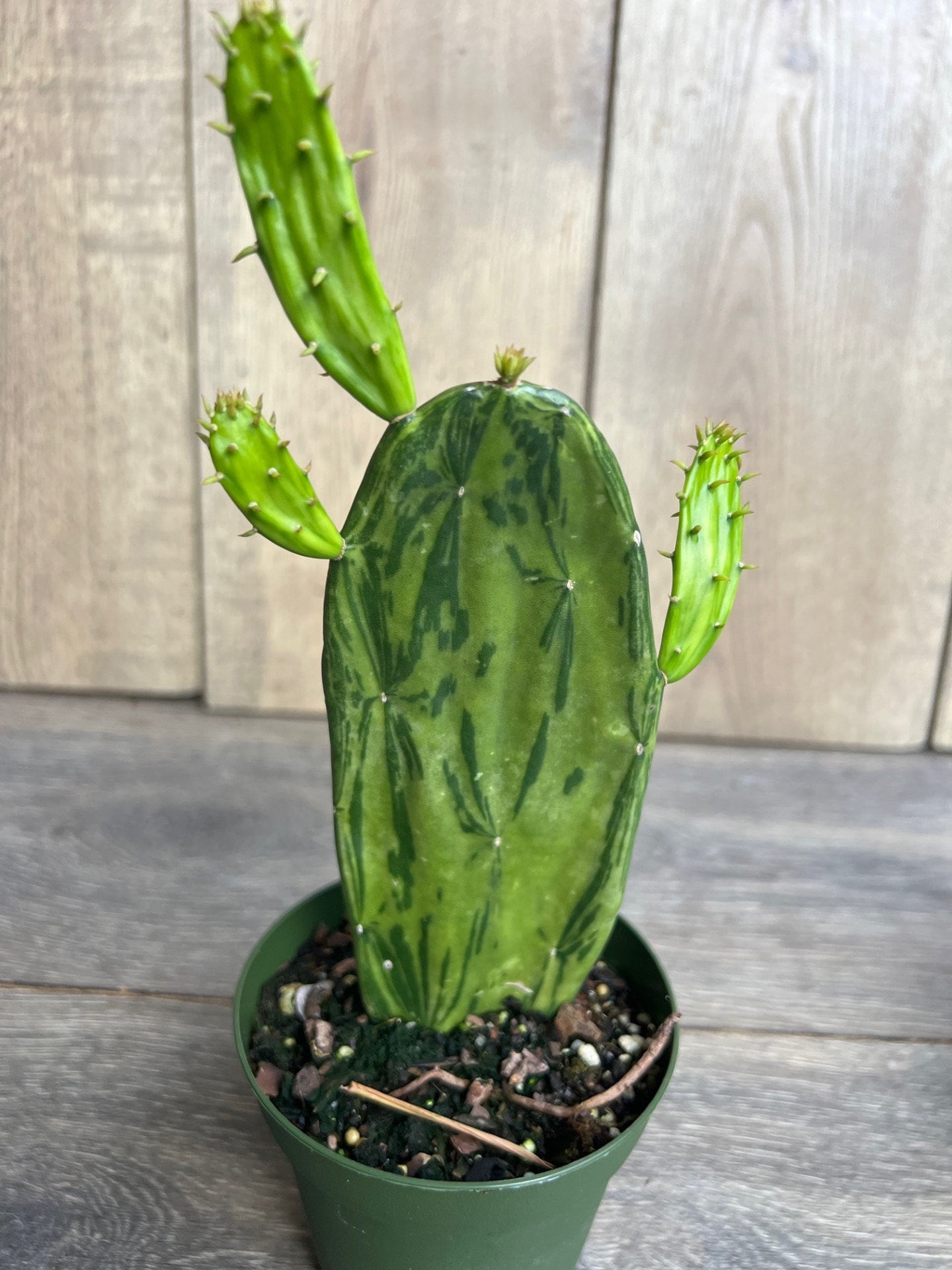Variegated Opuntia, prickly pear variegated in 4" Pot, opuntia cactus
Variegated Opuntia, prickly pear variegated in 4" Pot, opuntia cactus
Couldn't load pickup availability
Note: You will receive one variegated Opuntia cactus in 4" Pot similar to the pictures
The Variegated Prickly Pear (Opuntia spp.) is a striking cactus variety known for its unique, colorful pads that feature a mix of green, yellow, and white hues. This variegation adds a dramatic, artistic flair to the usually monotone prickly pear cactus, making it a sought-after addition for collectors and desert plant enthusiasts. The pads are typically thick and flat, covered with small spines and glochid spines (tiny hair-like structures). Variegated prickly pears thrive in full sun and well-draining soil, requiring minimal watering once established. Like other cacti, they prefer dry conditions and are highly tolerant of heat, making them ideal for xeriscaping or as low-maintenance houseplants in bright, dry spaces. However, their variegation is sensitive to too much shade or water, so it's important to provide them with the right balance of light and care to maintain their vibrant color.
Caring for a Variegated Prickly Pear (Opuntia spp.) requires replicating the cactus’s natural desert environment while being mindful of its unique variegation. Here’s a care guide to keep your prickly pear healthy and vibrant:
-
Light: Prickly pear cacti, including the variegated variety, thrive in full sun. Aim for at least 6 hours of direct sunlight daily to maintain the vibrant variegation on the pads. Insufficient light can cause the cactus to lose its color and become leggy. If growing indoors, place it near a south- or west-facing window.
-
Watering: As a desert plant, the Variegated Prickly Pear is drought-tolerant and prefers to be on the dry side. Water deeply but infrequently, allowing the soil to dry out completely between waterings. During the growing season (spring and summer), water every 1-2 weeks. In the winter, reduce watering significantly, as the plant enters a dormant phase. Overwatering is a common cause of root rot, so ensure the cactus is never sitting in wet soil.
-
Soil: Use a well-draining cactus or succulent mix, or amend standard potting soil with sand or perlite to improve drainage. The cactus’s roots need to stay dry, so avoid using heavy, moisture-retentive soil. If growing in a pot, make sure it has drainage holes to allow excess water to escape.
-
Temperature: Prickly pear cacti prefer warm temperatures between 70°F and 100°F (21°C to 38°C) during the growing season. They can tolerate higher temperatures in full sun but should be protected from frost. In colder climates, keep the cactus indoors during the winter, as it is sensitive to temperatures below 32°F (0°C).
-
Humidity: The variegated prickly pear thrives in low humidity, making it an ideal plant for dry, desert-like conditions. Avoid placing it in areas with high humidity, such as bathrooms or kitchens. In fact, a dry, well-ventilated environment is best for keeping it healthy.
-
Fertilization: Fertilize your prickly pear during the growing season (spring and summer) with a diluted cactus fertilizer or a balanced, water-soluble fertilizer. Apply once a month, but avoid fertilizing in the winter when the plant is not actively growing.
-
Pruning and Maintenance: Minimal pruning is needed, but you can remove any dead or damaged pads to help maintain the plant's shape. Wear gloves when handling the cactus to avoid the sharp spines and glochids (tiny hair-like spines) that can cause irritation. If the cactus becomes too large or unruly, you can trim pads back, but be sure to let any cut surfaces callous over to prevent infection.
-
Repotting: Repot the cactus only when it outgrows its pot or when the soil becomes compacted. When repotting, choose a pot with drainage holes and use a cactus-specific soil mix. Repotting is typically done every 2-3 years or when the plant becomes root-bound.
By providing plenty of sunlight, well-draining soil, and infrequent watering, you can ensure that your Variegated Prickly Pear thrives and maintains its striking appearance. Its drought tolerance and minimal care needs make it an excellent choice for both beginner and experienced gardeners.
Share

